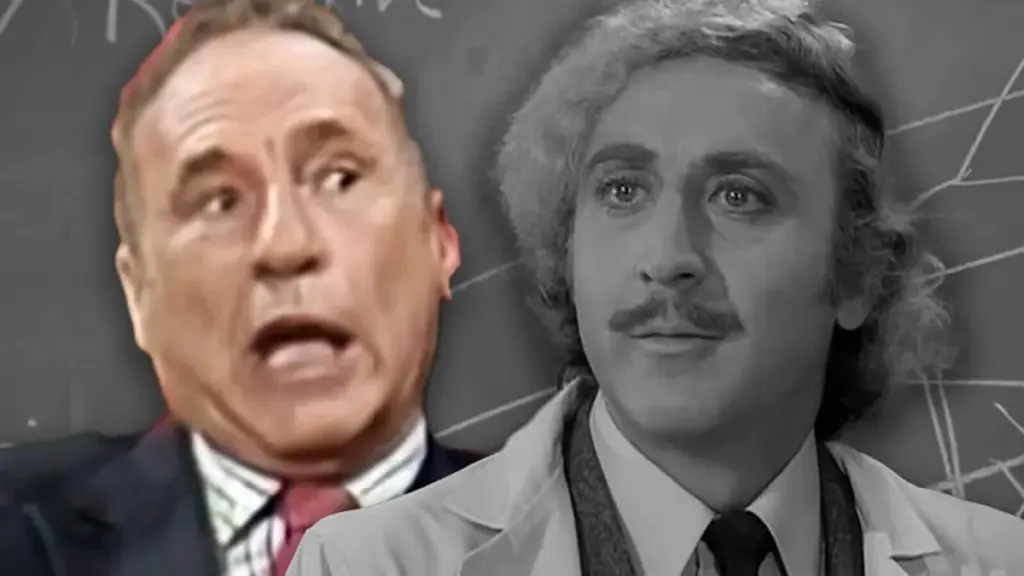- The comedy classic ‘Young Frankenstein’ was born from intense, near-physical arguments between creative partners Mel Brooks and Gene Wilder.
- The film’s most iconic musical number, “Puttin’ on the Ritz,” was almost cut by Brooks, who called the idea “crazy” until Wilder fiercely defended it.
- Wilder had to fight to keep Brooks from acting in the film, fearing he would break the fourth wall and ruin the movie’s specific tone.
- Despite the volatile writing process, Wilder described the actual filming of the movie as “a small breath of heaven each day.”
The Genius and Turmoil Behind a Comedy Classic
The 1974 masterpiece ‘Young Frankenstein’ is a landmark of comedy, but its creation was anything but funny. The collaboration between director Mel Brooks and star Gene Wilder was a clash of titans, marked by ferocious arguments and creative battles that nearly tore the project apart, yet ultimately forged it into the classic fans have loved for decades.
From Westerns to Frankenstein’s Castle
The idea wasn’t Brooks’ to begin with. It was born on the set of ‘Blazing Saddles,’ where Brooks noticed his star, Gene Wilder, scribbling on a notepad. The title read: “Young Frankenstein.” Wilder pitched Brooks his dream project about the neurotic grandson of the infamous doctor. Brooks was in, sealing the deal with a symbolic down payment—all $57 Wilder had on him.
However, that initial agreement gave way to a tumultuous writing process. “We fought and we fought,” Brooks stated in his memoir, ‘All About Me!’. “Our tempers rose, and we almost got into a fistfight.”
The Battle Over “Puttin’ on the Ritz”
The most legendary fight was over what would become the film’s signature scene. Wilder envisioned the monster, in top hat and tails, performing a tap-dance number to Irving Berlin’s “Puttin’ on the Ritz.” Brooks was horrified.
A “Crazy” Idea
“You tap dance to Irving Berlin? In top hat and tails with the monster? Are you crazy?’” Brooks recalled saying. Wilder recounted the intense argument in an interview with Conan O’Brien, stating he argued until he was “blue in the face.”
Brooks later explained his method: “If you didn’t argue for it, I knew it would be wrong, but if you really argued I knew it was right.” At the first test screening, the audience went wild for the scene. “I have never been so wrong in my life,” Brooks confessed.
A Partnership Forged in Conflict
The arguments didn’t stop there. Wilder successfully fought to keep Brooks from acting in the film, believing the director’s tendency to wink at the camera would shatter the movie’s delicate balance of horror and comedy. He also quietly ignored a suggestion from Brooks that the monster’s first words should be a Cary Grant impression, correctly assuming his partner would eventually forget the bad idea.
A Volatile Chemistry
Brooks’s volatile temper was a known factor, with one fight ending in him storming out of Wilder’s house, only to call minutes later and joke, “WHO WAS THAT MADMAN IN YOUR HOUSE?” It was, as Wilder noted, “Mel’s way of apologizing.”
This creative friction was the secret to their success. “I had to tone Mel down,” Wilder explained, “and he had to keep me from being too subtle.” This volatile chemistry, born of battles and near-fistfights, is what created a film that, despite the turmoil, Wilder called the “happiest I’d ever been on a film.”
Image Referance: https://www.yahoo.com/entertainment/movies/articles/mel-brooks-gene-wilder-waged-143000366.html
